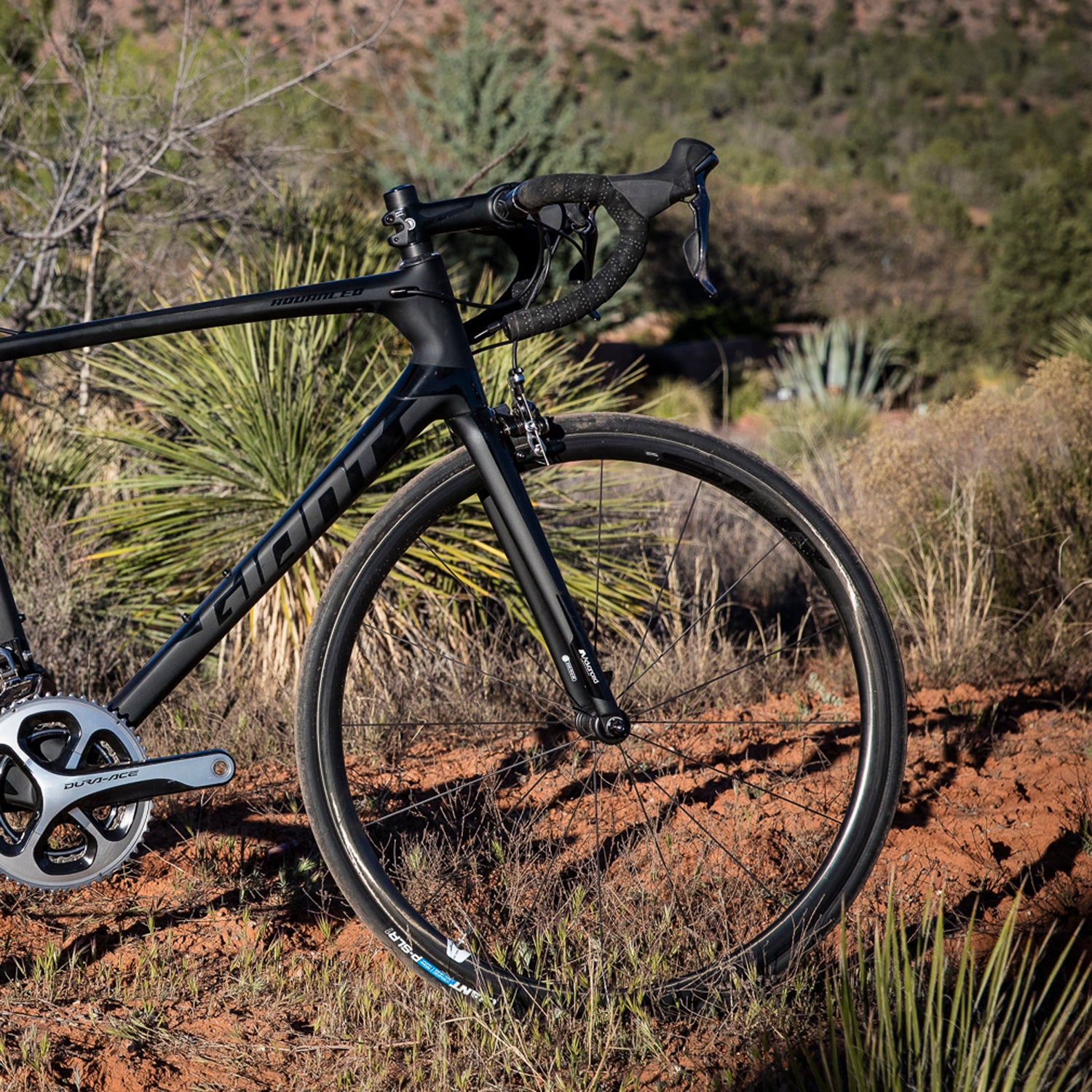Giant,╠řthe worldÔÇÖs largest bike manufacturer,╠řdoesnÔÇÖt get as much love as some of its smaller, more boutique╠řcompetitors, in part because its╠řdesigns and marketing tend to be a bit staid.╠ř(And partly, in our estimation, because of the David and Goliath syndrome.)╠řBut climbing on the ÔÇöwhich is every bit as spry and refined as any other top-shelf race bike on the market but costs some 30 percent lessÔÇömakes you think that more people should be riding Giant╠řbikes.
This new iteration of the companyÔÇÖs all-around race bike keeps the previous generationÔÇÖs strengthsÔÇölight, responsive, and totally rigid where you want it, namely in the head tube and bottom bracket regionsÔÇöbut adds enough compliance that it gives endurance roadies a run for their money. Giant credits a whole slew╠řof new frame tweaks for the added comfort, including a narrower top tube near the seat post, a mono-stay design out back that drops the seat stays below the seat-tube junction, a redesigned aero seat post that has more flex,╠řthanks to the╠řcam-bolt clamp that holds it, and skinnier fork and stays.
At just 14.4 pounds for our size M/L, the TCR Advanced felt as impatient to move as a caged animal. It leapt forward on 15-percent and steeper grades, which in turn made us want to stomp down even harder. The carbon wheels are impressively quick to spin up, which accounts for a lot of the bikeÔÇÖs pop. But unlike many lightweight machines, this bike was also planted and confident on sinuous descents. ItÔÇÖs so capable and fleet that it reminded us of the Cerv├ęlo RCA╠ř(only more comfortable), whose bare frame costs more than this complete bike.
Giant╠řkeeps the cost of its bikes down by producing most of its own components.╠řOn the TCR Advanced, the company produces the shallow-drop handlebars (alloy, like the pros prefer), stem, incredibly sprightly carbon wheels, tires, and even saddle. The only thing on the bike without a Giant logo is the Shimano Dura-Ace mechanical group set, which worked flawlessly (as expected).╠ř
Yes, the TCR Advanced 0ÔÇÖs $5,500 price tag is hardly cheap, but relative to comparably specÔÇÖd race machines from the competition, itÔÇÖs a steal. The only bike we can think of thatÔÇÖs as light and capable as the TCR is the , which is actually a little cheaper but not quite as high performance╠řbecause of its heavier╠řaluminum wheels. (Incidentally, Fuji also keeps its costs low with in-house component manufacturing.)
The best news╠řfor the budget conscious:╠řthe , with the exact same frame as the model we rode, just╠řwith Ultegra parts and slightly heavier wheels, is an incredible dealÔÇö$3,200ÔÇöand still right at the UCI weight limit of 15 pounds.
╠ř


